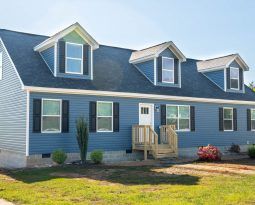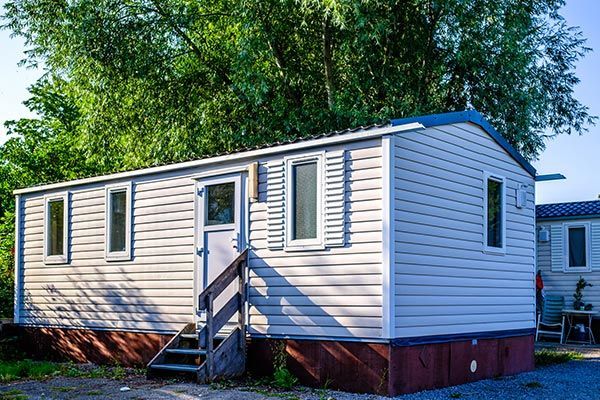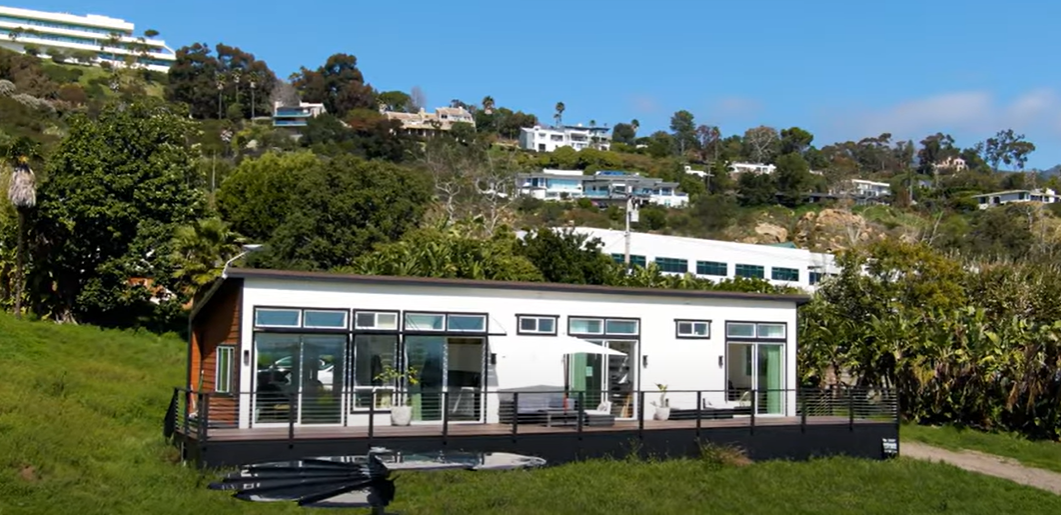
March 1, 2025
Affordability is cited by 71% of manufactured homebuyers as being the driving force for choosing a manufactured home according to the Manufactured Housing Institute . Unfortunately, there are those that will not consider purchasing a manufactured home, mistakenly believing that a manufactured home must not be built as well as a site-built home, otherwise the sales price would be much higher. Also unfortunately, that assumption is often not broached when salespeople fail to understand and convey how the manufactured home assembly line construction process not only enhances quality, but also the value added aspects accounting for the lower homebuyer cost as compared to the traditional on-site construction process. In all respects of quality of construction and all other requirements, a new manufactured home is equal or superior in every aspect as a site-built home at a cost of 50% less. It may seem odd to “justify” quality and affordability, but sometimes you must, especially when there is such a large disparity in comparative costs of a home. The following are the top 5 “justifications for savings derived from modern manufactured home production processes that create value, allowing more Americans to realize quality affordable home ownership , even in the face of an ever-widening housing affordability gap versus traditional site-built homes. A manufactured home salesperson that grasps and conveys these and aforementioned attributes will be emboldened in the sales of America’s only truly quality-built affordable homes.
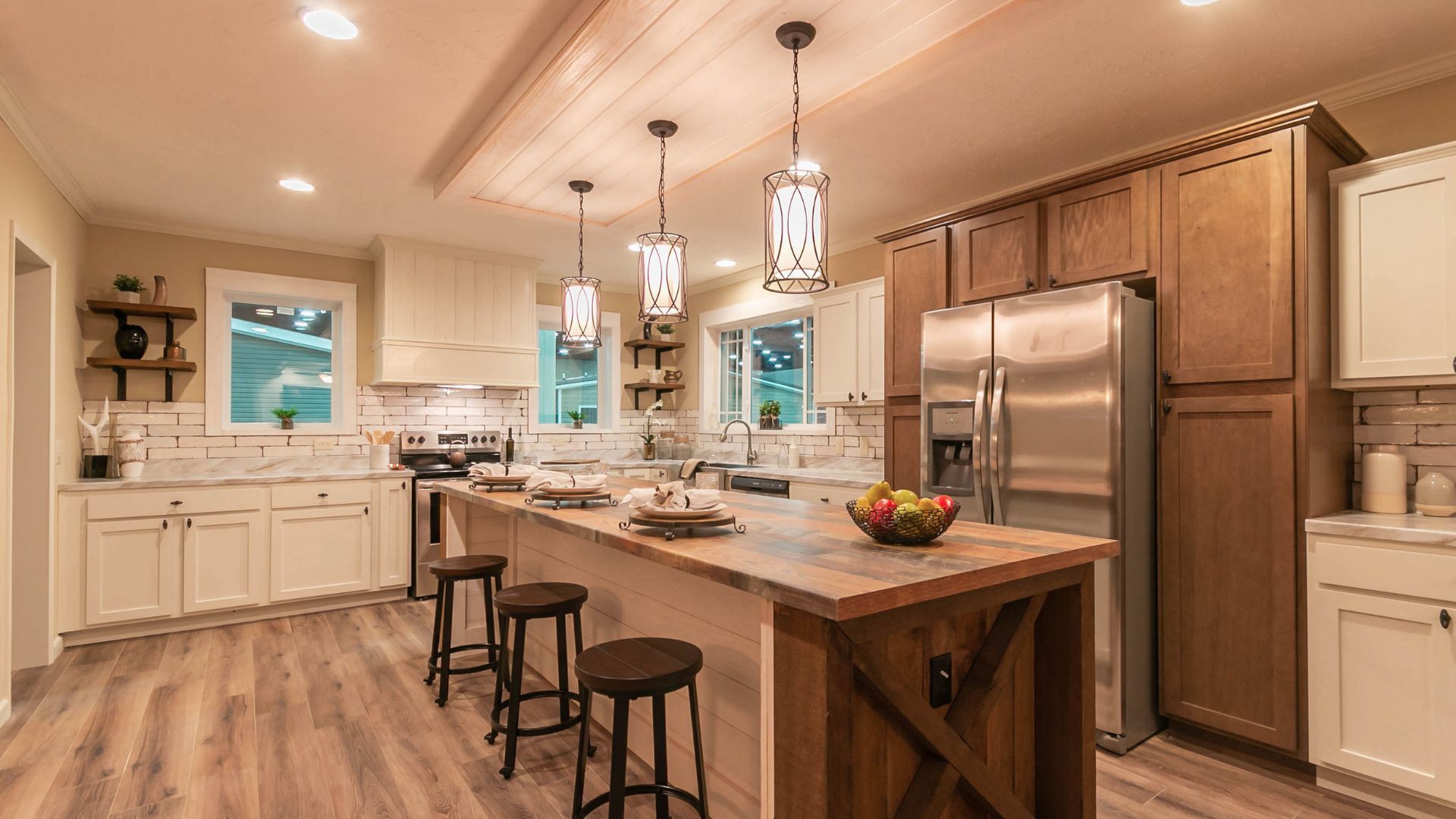
By Ben Nelms
•
December 8, 2024
The following are 5 of the top “justifications” for savings derived from modern manufactured home production processes that create value, allowing more Americans to realize quality affordable home ownership, even in the face of an ever-widening housing affordability gap versus traditional site-built homes. In all respects of quality of construction and all other measurements, as delineated below, a new manufactured home is at least equal or superior in every aspect to a site-built home at a cost of about 50% less. It may seem odd to “justify” quality and affordability, but sometimes you must, especially when there is such a large disparity in comparative cost of a home. The following are 5 of those justifications: (1) Measurable Savings In Reduced Completion Expediency “Time is money,” greater flexibility and efficiency of the manufacturing process allows for customization of each home to meet a buyer’s lifestyle and needs and are preplanned before the home begins the construction phase and does not delay completion. Typically, a customized new manufactured home can be built and ready for occupancy on site within weeks, as compared to months for a home built on site. This expediency accounts for much of the savings in becoming a manufactured home owner. (2) Controlled Environment And Assembly Line Techniques The controlled construction environment and assembly line techniques remove many of the problems encountered during traditional construction, such as weather, theft, vandalism, damages to building products and materials and unskilled labor. Manufactured home factory employees are well trained and managed more efficiently than the system of contract labor employed by the site-built home construction industry. (3) Benefits From The Economies Of Scale Much like other assembly line operations, manufactured homes benefit from the economies of scale resulting from purchasing large quantities of material, products and appliances. Manufactured home builders can negotiate substantial savings on many components used in building a home, with these savings passed on directly to the homebuyer. (4) Evolution In Factory Built Technology Today’s manufactured homes have experienced an evolution in types and quality of home available to buyers. Technological advances allow manufactured home builders to offer a variety of architectural styles and exterior finishes heretofore were not available off-site, that will suit most any buyer’s dreams, while allowing the home to blend in seamlessly into most neighborhood. (5) Efficiencies Of The Factory Building Process The affordability gap in comparison to traditional site-built home is primarily due to the efficiencies of the factory-building process. Manufactured homes are built almost entirely off-site on a factory assembly line.

November 4, 2024
Today’s manufactured homes can deliver outstanding quality and performance at prices that are up to 50 percent less per square foot than conventional site-built homes.These savings allow more and more Americans to own their own home, even in the face of an ever widening housing affordability gap.
September 8, 2024
Formerly known as “mobile homes,” manufactured homes are sold mostly through retail dealerships and can be customized to fit your needs and budget. Manufactured homes are an affordable alternative for home buyers, and are available with features and amenities found only in site-built homes, and will have a cost of about 50% less than a comparable site-built home. Here’s what to consider if you are thinking about buying a new manufactured home. What is a manufactured home? – Manufactured homes are built in factories according to construction and safety standards set by the U.S. Department of Housing and Urban Development,or HUD. The homes are built on permanent chassis – base frame with wheels – and then professionally transported in one or more sections and installed on site. The wheels and axles are removed, and the homes are anchored in place. They can be set on permanent or semi permanent foundations. What is a mobile home? – The terms “mobile homes” and manufactured homes are sometimes used interchangeably, but there is a big difference. Mobile homes are factory-built homes that were built before June 15, 1976, when the federal standards went into effect. Manufactured homes are those built after that date, The Manufactured home industry has come a long way in 40-some years, so new models are a far cry from the mobile home stereotype. Buying a manufactured home - Most manufactured homes are sold through retailers. You may find retailers and available homes near you here at ManufacturedHomes.com ., including a large selection of 3D videos of interiors of model homes available, as well as online price quotations before visiting a retailer. Cost of a manufactured home – The average sales price of a manufactured home in November 2019 was $81,600, according to the latest available data from the U.S. Census Bureau. But the basic home price isn’t the only cost to consider. There are also upfront costs for land if you purchase a lot and for adding any features, such as steps or patios, or sitting the home on a permanent foundation. Often the cost of transporting and setting up the home is included in the price. Make sure you understand everything that is required and include those costs in your budget. Residents in manufactured home communities typically pay ongoing ground rent as well as fees for shared amenities, services and utilities. Factor in those costs when thinking about living in a community. Manufactured home loans - You can find a lender through a manufactured home retailer. Manufactured home lenders and retailers have agreements to work with one another. Or you can find a lender on your own that’s willing to finance a purchase from that retailer. Two main types of loans are used to finance a manufactured home: mortgages and chattel loans. Generally, manufactured homes must be permanently fixed on a foundation and titled as real property with the land to be eligible for financing with a mortgage. Other manufactured homes are titled as personal property and are eligible for chattel loans.
September 2, 2024
Today’s Manufactured Home is not Your Grandpa’s ‘Mobile Home’

August 22, 2024
Producers and federal housing officials are eager to point out that today’s manufactured homes present a variety of size and design options, and are safer than ever. The Federal government says new safety standards and building materials mean home buyers priced out of site-built homes and have viable options. Terrace Heights in Dubuque, Iowa, may fit common notions of what an older manufactured home community looks like, It features rows of small nondescript “mobile homes” set along quiet streets. Some of the homes date back to the 1970’s. That was before climate change kicked up the ferocity and frequency of storms. “If a tornado were to come into Dubuque, we would have to literally pack up the animals, get in a car and go find someplace safe”, said Lynn Murphy, who lived at Terrace Heights for about five years. The structure was built in 1978. “You move into a trailer, especially a trailer park, because you want lower rent,” she said. More than 800 miles from Dubuque, a group of manufactured homes in Washington presented a very different picture in early June. Model homes that would have not look amiss in any new subdivision in the country lined the National Mall for the Housing and Urban Development Innovative Housing Showcase., with numerous materials and features often not found in trailers and mobile homes in the past: granite countertops, stainless steel appliances and even customized floor plans.. “I encourage everybody to see what these homes look like. They will really surprise you,” said Teresa Baker Payne, who leads HUD’s manufactured housing program. Beyond the amenities, HUD officials – and the Biden administration – say modern manufactured housing represents a solution to the affordable housing crisis and provides the safety and energy efficiency features that make the homes climate resilient. People often use the terms ”mobile homes” and manufactured homes interchangeably. Mobile homes, what Murphy refers to as trailers, were generally built before 1976 and do not conform to the HUD Code, which sets standard for all manufactured housing in the country. Today, the average price of a new manufactured home like the ones on display at the HUD showcase is about $127,250, according to data from the Manufactured Housing Institute (MHI). According to Zillow.com. The average price of a site-built house in Dubuque, where Murphy lives, is about $230,000.
By HUD Public Affairs
•
August 19, 2024
New program offers affordable financing for organizations to purchase or refinance and revitalize manufactured home communities to lower housing costs across the country. WASHINGTON - Today, the U.S. Department of Housing and Urban Development, through the Federal Housing Administration (FHA), announced the launch of its new Manufactured Home Community loan product, which will provide an FHA-insured financing option for the purchase, refinance, and revitalization of manufactured home communities. This action will help entities to preserve, stabilize, and revitalize these vital sources of affordable housing. The announcement was made this morning by HUD Acting Secretary Adrianne Todman at a media preview for the 2024 Innovative Housing Showcase on the National Mall in Washington, D.C. “Manufactured home communities offer a stable and affordable housing option for many families. Today, HUD is providing new resources for preserving and revitalizing these communities by providing FHA-insured financing to mission-focused groups to buy or refinance and revitalize manufactured homes,” said HUD Acting Secretary Adrianne Todman. “This is just one of many ways HUD is empowering residents, industry leaders, and governments to expand access to innovative, affordable housing solutions, particularly in rural communities.” Beginning today, certain mission-focused entities such as resident-owned manufactured home communities, cooperatives, non-profit entities and consortia, state and local governments, community development financing institutions, and Indian Tribes, will be eligible to use this program to finance the acquisition of or to improve existing communities, including making updates to common area resources and helping to maintain rent affordability. This tool provides an alternative to purchase of these communities by private equity funds and similar financial interests, whose track record reportedly includes unaffordable rent increases, failure to invest in community infrastructure, and regulations that don’t respect the community’s culture. This permanent financing tool complements HUD’s recently announced PRICE program , which offers competitive grant opportunities for investments in affordable manufactured home communities. HUD estimates that more than 5,000 individuals and families, based on average community size, could benefit from the program within the next five years. This Manufactured Home Communities program leverages FHA’s Multifamily 223(f) program, which will now provide permanent mortgage financing for manufactured home communities that may have previously been ineligible, and for previously ineligible manufactured home cooperative borrowers to be eligible to acquire and obtain financing for existing communities. “With this product, HUD aims to support resident-owned communities and other mission-focused owners who are committed to high-quality, affordable manufactured housing that is not at risk of exorbitant land rent increases that jeopardize the stability of their homes and futures,” said Assistant Secretary for Housing and Federal Housing Commissioner Julia Gordon. “Today’s announcement is an important first step for a program that we hope will provide a meaningful path to both affordable manufactured home community creation and preservation,” said Deputy Assistant Secretary for Multifamily Housing Programs Ethan Handelman. “As we progress with the program implementation, we will continue to assess both its scope and entity eligibility.”
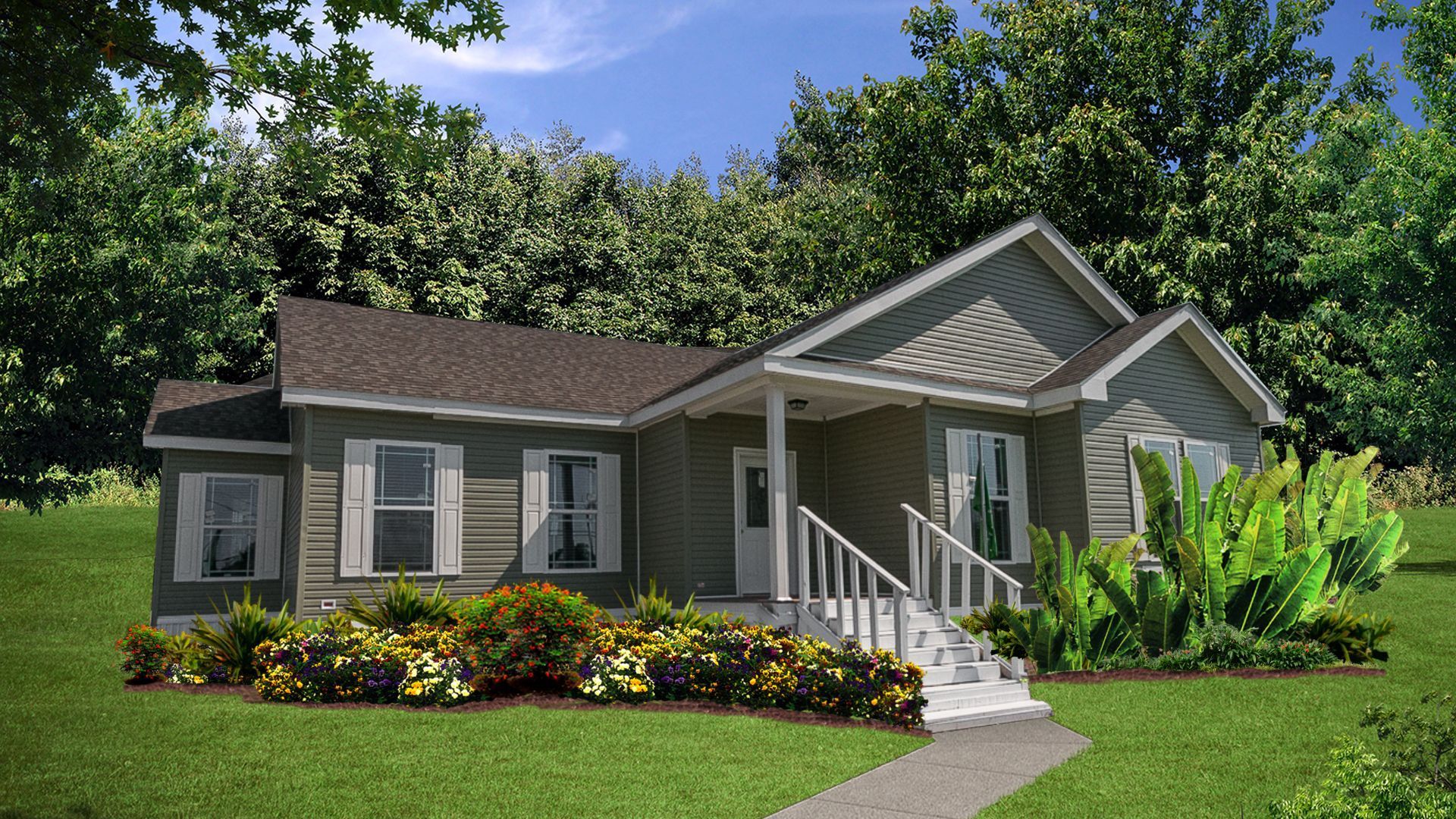
By Ben Nelms
•
August 17, 2024
A study by Foremost Insurance Company showed that the average manufactured homeowner is 49.9 years old. However, today’s high quality affordable manufactured homes appeal to a wide range of demographic groups. The following three groups and their motivations for choosing new modern manufactured housing are summarized below. “Baby Boomers” – (aka Generation X -born between 1946-1964). This generation makes up a substantial portion of the world’s population. It represents 21.9% of the population in the U.S.. These are “senior citizens” who desire to downscale the size of their homes. A large percentage of these retirees purchase manufactured homes for placement in senior communities that are designed to satisfy a safe comfortable lifestyle with the social activities that encourage interaction with others of the same interest and age. Baby boomers are perhaps the biggest advocates of manufactured home ownership and tend to be very involved in encouraging other seniors and friends to join in this ideal lifestyle, and are appreciative of the customization aspects of today’s new manufactured housing. “Empty Nesters” – Empty Nesters are those who also want to downscale the size of home, but often for other reasons.These are couples in the 45 to 60 age group whose children have grown into adults and have left the family home to create their own families – leaving mom and dad living in a larger home than they need or want. Empty nesters are usually still working and want to eliminate the upkeep expenses of a home, energy colts, property takes and are looking forward to being in a financial position to retire comfortably when the time arrives. “Entry Level” or “First-Time Buyers” – The Foremost Study also found that 59% of manufactured households have no children, and the average size of manufactured home households is 2.7 persons. This counters the belief of some planning and zoning commission that manufactured home owners have more children and therefore will add to school overcrowding. However, over the last few years some states have passed legislation making it illegal to discriminate against manufactured homes. Families have been the “heart and soul” of factory-built manufactured homes for over five decades. Today’s new manufactured home is a great option, especially when considering the savings in energy cost, fire and wind safety, and the ability of a home to match a family’s wants and needs. All that and the fact that a new custom built manufactured home is “everything a home should be” and meets all the criteria of homeownership, including quality of construction and appearance, and will have a cost of about 50% less than a comparable home built on site. A manufactured or modular home attached to real property is eligible in most situations for mortgage financing equal to a traditional site-built home. In conclusion, it can be said that manufactured homes have something for everyone and is truly the realization of the uniquely American Dream of Homeownership for all demographics.
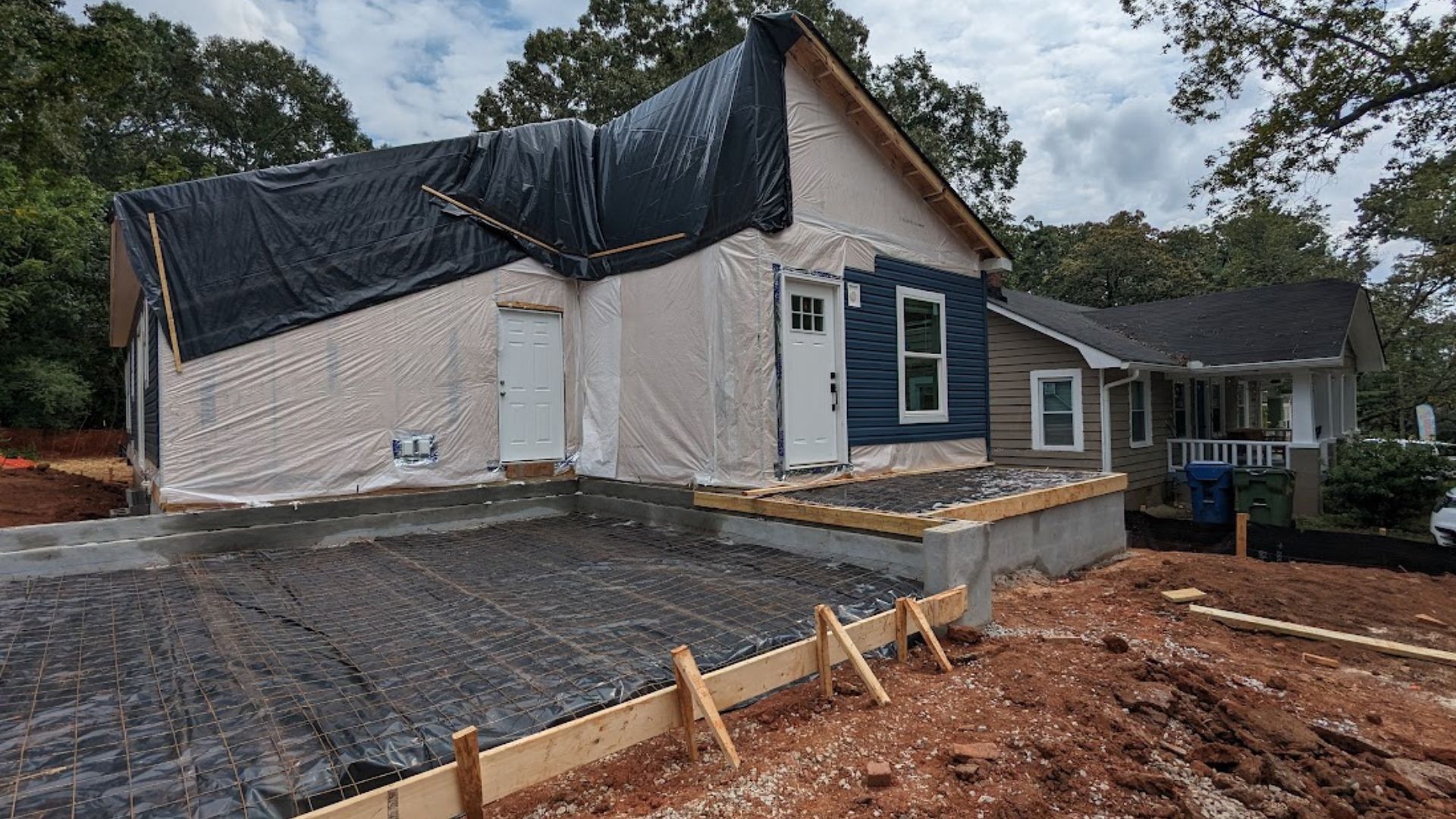
By Chris Nicely
•
August 12, 2024
As we move further into 2024, the housing market continues to grapple with significant challenges, including affordability issues, supply shortages, and environmental concerns. In response, innovative solutions like factory-built housing are gaining momentum. This article explores the outlook for housing over the next two years, with a specific focus on the burgeoning factory-built housing sector. Current State of the Housing Market The housing market remains under pressure from several fronts. According to the National Association of Realtors, existing home sales have been sluggish due to high mortgage rates and a limited inventory of homes for sale. Moreover, the National Association of Home Builders reports that construction costs remain elevated, driven by labor shortages and supply chain disruptions. Factory-Built Housing: An Emerging Solution Factory-built housing, which includes modular, manufactured, and prefabricated homes, presents one viable solution to these challenges. These homes are constructed in a controlled factory environment, which allows for greater efficiency, cost savings, and quality control compared to traditional on-site construction. Advantages of Factory-Built Housing Cost Efficiency: Factory-built homes can be constructed at a lower cost due to bulk purchasing, economies of scale, and reduced labor costs. The McKinsey Global Institute highlights that factory-built housing can realistically reduce construction costs by up to 20%, and in some cases, even more. Time Savings: These homes are built faster than traditional homes, as construction can proceed without delays due to weather or site preparation, or material outages. According to the Modular Building Institute, factory-built homes can be completed 30-50% faster than site-built homes. Environmental Benefits: Factory-built homes generate less waste and are often more energy-efficient. The Environmental Protection Agency notes that these homes typically have a smaller carbon footprint compared to traditional construction methods. Market Outlook for 2024 and 2025 Increased Adoption and Market Growth: The adoption of factory-built housing is expected to accelerate in the coming years. According to a report by MarketsandMarkets, the global modular construction market is projected to grow from $84.4 billion in 2020 to $130.5 billion by 2025.This growth is driven by increasing demand for affordable housing, advancements in construction technology, and growing environmental awareness. Government Support and Policy Changes Governments are beginning to recognize the potential of factory-built housing to address housing shortages and revitalize neighborhoods. Several states are revising zoning laws to accommodate modular and manufactured homes. For instance, California has introduced legislation to streamline the approval process for factory-built homes, aiming to increase the state’s housing supply. Technological Innovations Advancements in technology are also poised to boost the factory-built housing sector. Innovations such as 3D printing, smart home integration, and sustainable building materials are being incorporated into factory-built designs, making them more attractive to consumers. A report by McKinsey & Company highlights that digital tools and automation in construction can further reduce costs and enhance productivity. Challenges Ahead Despite the promising outlook, factory-built housing faces several challenges. Regulatory hurdles, public perception, and financing issues remain significant barriers. To overcome these obstacles, stakeholders must continue advocating for policy changes, raising public awareness, and developing innovative financing solutions. Conclusion As we look ahead to the balance of 2024 and 2025, factory-built housing stands out as a promising solution to many of the housing market’s challenges. With its cost efficiency, time savings, design enhancements, and environmental benefits, factory-built housing is well-positioned to play a key role in addressing the housing shortage and making homeownership more accessible. By embracing innovative approaches and supportive policies, we can create a more sustainable and affordable housing future Sources National Association of Realtors, “Existing Home Sales Report,” 2024. National Association of Home Builders, “Construction Cost Survey,” 2023. McKinsey Global Institute, “Modular Construction: From Projects to Products,” 2019. Modular Building Institute, “Modular Construction Overview,” 2023. Environmental Protection Agency, “Green Building Standards and Certification Systems,” 2023. MarketsandMarkets, “Modular Construction Market – Global Forecast to 2025,” 2020. California Legislative Information, “AB 1030 Housing,” 2023. McKinsey & Company, “The Next Normal in Construction,” 2020.

August 6, 2024
In early 2019 we posted our blog addressing the legality issues plaguing “tiny” houses and the available “make sense” manufactured homes alternatives for tiny home aficionados. Fast forward five years later. The so-called tiny home movement has gained momentum, but is plagued with the legalities of residing in a home without any universal building code requirements and/or financing options. Living Legally In A “Tiny Home” Can Be Exceedingly Difficult, But Not Necessarily – What is a “tiny home”? Most of those television depictions seem to indicate that it is a structure built upon a wheeled trailer offering under 400 square feet of living space. However, there are those of the tiny home community that suggest the definition should include any small home under 800 to 1,000 square feet. Many local governments have a minimum size requirement (often 800 to 1,000 square feet) for single family homes, prohibiting construction and/or installations of tiny homes on their own plots. Those minimum size requirements and the absence of a national certification by the builder, eliminates habitation, except perhaps as an auxiliary dwelling unit (granny flat, guest house),etc. Park Model RV’s And Small Manufactured Homes: How Are They Different? – Today’s modern manufactured homes are the only form of residential housing built to a federally mandated national building code: The Manufactured Home Construction and Standards Act of 1974 (HUD Code). HUD Code applies only to homes with a minimum 400 square feet of living space. Major recognized manufactured home builders also build under 400 sq. ft. Park Model RV’s that should be included in the “tiny home” conversation. These homes are generally constructed to a national recreation vehicle code that certifies builder’s stringent adherence to health, safety and roadworthy requirements. Park models produced by manufactured home builders are skillfully designed to maximize comfortable living space and incorporate the same quality of building materials, appliances, amenities and workmanship utilized in construction of the larger HUD Code manufactured homes and site-built homes. Quality constructed Park Models are welcome in recreational park communities, campgrounds and are ideal for guest homes, accessory dwelling units, vacation homes, second homes, etc. However, there are no known under 400 square square feet homes or recreational vehicles that will meet requirements as continuing permanent housing. The only form of small living homes that check all the boxes for living legally full time, comfortably, inexpensively, with financing options , are HUD Code manufactured homes with over 400 square feet of living space.
By Candace
•
December 13, 2020
We help clients restore their credit to create Generational Wealth through credit literacy.
By Candace
•
November 15, 2020
We help clients restore their credit to create Generational Wealth through credit literacy.
By Candace
•
October 19, 2020
We help clients restore their credit to create Generational Wealth through credit literacy.
VISALIA SALES CENTER
6633 Harvest Ave., Visalia, CA 93291
Mail: PO Box 970 Visalia, CA 93291
Phone: 559-651-0700
Toll Free:
1-800-698-3330
Kerman Sales Center
14754 W. Whitesbridge Ave., Kerman, CA 93630
Phone: 559-846-9373
Toll Free: 1-800-656-7727
From Fresno Call:
559-264-9725
Content, including images, displayed on this website is protected by copyright laws. Downloading, republication, retransmission or reproduction of content on this website is strictly prohibited. Terms of Use
| Privacy Policy



